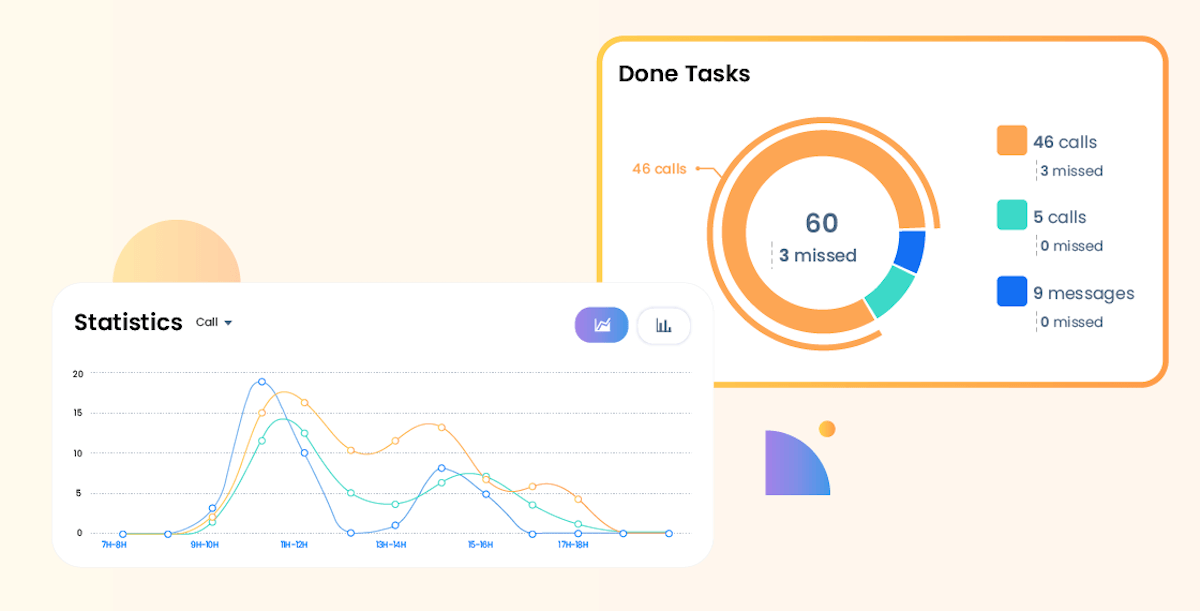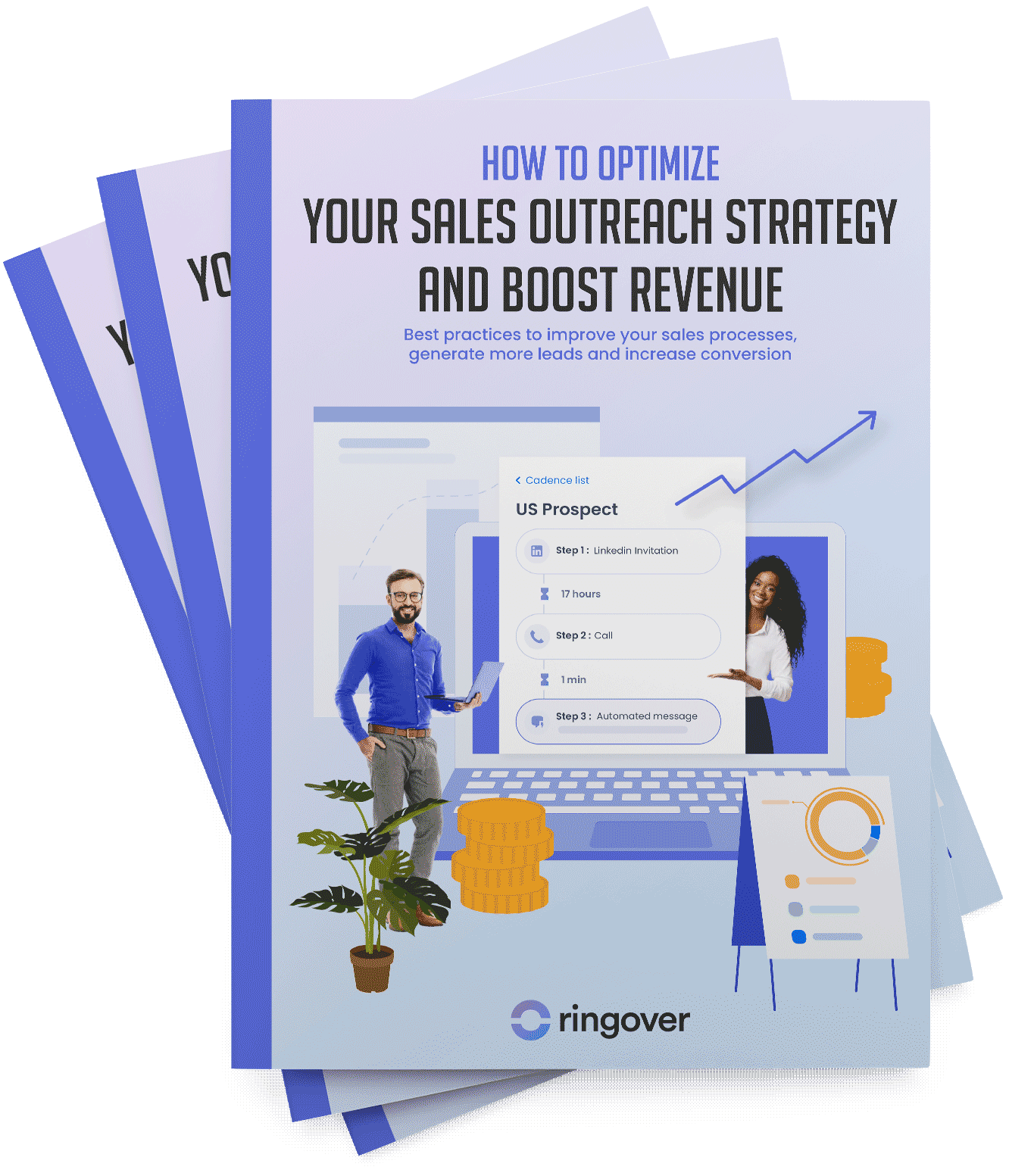Summary
Identifying and securing new prospects is a must for any business. It's even more important when the inbound strategy in place isn't effective enough to populate the sales pipeline. To resolve this issue, businesses need to review this strategy, of course, but they should also be looking at how they can boost their sales force.
Simply creating sales prospecting sequences isn't enough, you need to provide your sales team with the right tools and all of the support needed to drive their efficacy.
Sales forces: Definition
The sales force is what we call all of a company's staff who sell products and/or services. However, this sales force has the key mission of developing the business' profitability and their market shares. Developing turnover and profitability requires:
- Detection and prospecting
- Sales negotiations
- Generating client loyalty
- Information and support (for clients and distributors)
The challenges of sales force management
When it's done right, sales force management allows you to optimise the performance of the teams composing the force. This management is organised around actions such as recruitment, training, and motivating employees.
In each of these actions, the sales department needs to be able to align the sales force's targets with that of the business. In the next sections, we'll look at how this can be implemented in concrete terms.
1. Simplifying your sales force's work
It's important to rationalise the processes. Asking a sales agent to send 8 different messages to 100 prospects puts a lot of pressure on them, as this means carrying out 800 actions. In concrete terms, the idea will be to structure and build a hierarchy of these actions for their daily work.
Effectively, this mountain of actions can be broken down into a smaller number of actions to be done each day. Proceeding this way allows you to reduce fatigue and hesitation with decision-making around what needs to be done and when to do it.
The other advantage is found in the tracking of tasks which is improved and less time-consuming. The result? Productivity skyrockets!
2. The importance of having a model for every channel
As part of a multi-channel strategy, it it vital to have a range of models to adjust when necessary. It would be counterproductive to rewrite each email, SMS or LinkedIn message sent.
Moreover, writing copy isn't always everyone's forte. Plus, even when someone who has a gift for writing can find themselves facing writer's block from time to time, and it can be complicated to customise the same content for each prospect.
We therefore recommend creating tested models for each channel with variable information (surname, first name, title, etc.). This way, your sales agents can be sure that they're using the highest-impact messages at each step of their prospecting sequence.
It should be noted that Cadence, the prospecting tool developed by Ringover, integrates its own template library and allows you to conduct A/B testing to identify and reproduce the practices with the biggest pay-offs.
3. Motivating your sales force by setting action-focused goals
Generally, you ask sales teams to achieve targets based on the generation of a given number. In themselves, these targets aren't bad, but they're not always achievable. This can be explained by the following (non-exhaustive) factors:
- The time period. Certain months are more challenging than others in certain sectors according to seasonality and various fluctuations, making the targets harder to achieve.
- The list. Sometimes, the list of prospects can be at the root of the issue. If the list of people to contact isn't “good” because it contains too many prospects who aren't interested in making a purchase, which has a big impact on team performances and may cause frustration.
- Just… bad luck. That's right! In some cases, even with the best will in the world, your employees might not reach their targets and, in these cases, it's simply down to bad luck.
To maintain your selling agents' motivation, add action-based targets to these figure targets.
For example, you can set the goal of making 10 calls and sending 15 emails per day. You can make these targets more interesting by offering a commission that will reward their efforts and engagement with prospects and clients.
4. Optimising team monitoring
In general, it takes a lot of effort and perseverance to convert a single prospect. If your sales team has only been able to convert 10% of its list, how can you tell whether the result is down to the list itself or your sales agents giving up too quickly?
To reassure them that your team is putting the right efforts in and is making the most of the multi-channel approach, track their activities daily.
Regular observation isn't about micro-managing or policing, but it's rather about highlighting the efforts put in and identifying needs.

5. Better resource management and planning
Clichés die hard and it's normal for people to think that the best sales teams are the ones composed of seasoned warriors on the selling battlefield.
However, the best sales agents aren't necessarily those with the most experience. No matter how many years of experience it has behind it, a team always needs to stick to a strategy and a clear method.
That's where planning makes all the difference. It offers a global vision for your projects, but that's not all. Here are the other benefits of planning:
- It facilitates the decision-making process
- It helps to meet deadlines
- It helps with measuring the sales strategy
- It allows your to optimise resource management
As you can see, it's an essential and it involves always providing your employees with the right tools for the job, so that they can reach their targets under better conditions.
6. Coaching to help integrate new sales recruits
Even with many years of experience behind them, a sales agent may struggle to find their footing in a new environment. There's a whole onboarding phase that has to be completed, during which the new team member needs to get to grips with your messaging, values, product/service information, and business processes.
Having a sales sequence with clearly defined actions and message templates for each step makes this learning phase easier. New recruits are given a step-by-step guide and are much quicker in becoming effective and efficient team members.
The tools that will help to boost your sales force's efficiency
Using a prospecting tool lets you implement the 6 tips that we've covered in this article, through:
- Coaching/onboarding
- Planning and optimising resources
- Better monitoring
- Creating models for every channel
- Rationalising processes
- Setting action-based targets
The combination of this type of solution and your other sales support tools (CRM, telephony solution) gives you a great performance gage. To find out more or to get a demo and a free trial of our sales prospecting software, get in touch with our experts.
Sales forces — FAQs
What are the characteristics of a sales force?
The sales force directly contributes to a business' revenues. It varies from company to company, depending on the organization structure used. We can divide the sales force into multiple sub-divisions:
- The base employees
- The traveling sales force, which refers to the business' remote/field sales agents
- The external sales force, which covers people who are not employed by the business but who still contribute to its revenues: Partners, freelance sales specialists, brokers, etc.
How does a business' sales force work?
Regardless of the organization used, the sales force always has 4 key missions:
- Prospecting, which covers all tasks enabling the identification and contacting of new potential clients
- Sales
- Post-sale follow-up, which covers all loyalty generation tasks
- Support and information for clients and distributors, if applicable, as well as the assessment of their needs
What are the tools needed by a sales force?
To achieve their targets, the sales force needs the right tools:
- A CRM software Depending on the size of your business and your needs, you can choose your solution from the countless CRM tools available (Sellsy, Salesforces, Hubspot, NoCRM.io, Pipedrive, Efficy, etc.).
- A prospecting tool, to name some of the top tools for boosting prospecting, we'd recommend: Cadence by Ringover, LinkedIn Sales Navigator, or Salesloft.
- A prospect identification software
- Tools for meetings, such as a business telephony solution, or an online booking system such as Calendly or SimplyBook.me.
- A solution for giving product demos remotely: Meet By Ringover, Google Slides or Prezi.
- A tool to facilitate closing. The best-known include Get Accept, You Sign, Proposify, etc.
Whatever choice you make, make sure that your tools are compatible with one another so that you can automatise as many tasks as possible.


